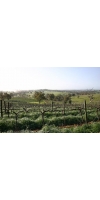Wine from Thorn Clarke - Milton Park

The Thorn Clarke Estate
The Thorn-Clarke families have been growing grapes in the Barossa and Eden Valley regions of South Australia for many years. They bought the property in 1990 (at that time it was run as a dairy). When looking for a source of grapes that would allow for high quality, affordable wines to be produced for the Milton Park range, South Eastern Australia's irrigated river regions was the answer. The Thorn-Clarke philosophy of supplying outstanding wines at each price level carries through to the Milton Park range, every measure has been taken to ensure this objective has been met. The resulting wines show character, consistency and true varietal attributes - a range of excellent wines at very reasonable prices.
The Thorn Clark Vineyards
The Milton Park name derives from the family's picturesque Milton Park property, situated in the Angaston hills, a 1.5 hour drive north east of Adelaide in the State of South Australia. The primarily Mediterranean climate enjoyed throughout the Riverland areas of South Eastern Australia, combined with fertile soils and water from the Murrumbidgee and Murray River systems makes for ideal vineyard conditions.
Thorn Clarke Milton Park Chardonnay grapes were crushed, destemmed and then pressed using a membrane press. Pressings were not used. Fermented using French Yeast at 12-15 degrees Celcius. The ferment was kept slow and cool to retain all the natural flavors of the grape. The wine was then racked and filtered. Bottling took place soon afterwards so the wine was a true expression of the grape and the terroir from which it was made.
The color is a rich vibrant green. The nose shows lifted clean, sweet fruit of apricot and peach. The palate is medium to full bodied and exhibits predominantly peach and nectarine flavors, with cloves and cardamom evident from the use of a small amount of French oak. The wine finishes full and long with a nice balance of sweet fruit and creaminess.
- back
Selected Options
Wineries
Categories
Pricing
Countries
Regions
Grape Types
Wineries
Organic/Free Shipping
Jean Reverdy Sancerre Blanc is 100% Sauvignon Blanc
Single vineyard. Vinification: cold fermentation in stainless steel tank, no oak, no malolactic fermentation.
Sweet, fruity and clean. White flowers (acacia, jasmine) and citrus fruits aromas. Perfectly balanced.
A delicious wine, perfect with fish dishes, especially salmon, and a local goat cheese Crottin de Chavignol.
Matheus Piesporter Goldtropfchen Riesling Kabinett is made from 100 percent Riesling.
This Goldtröpfchen ranks as an unofficial "Grand Cru" delivering light floral and fresh Kabinett style wines.
Their later harvest wines, Spatlese and Auslese, tend toward apricot flavors, honeyed notes and superb intensity. All grapes are grown on Devonian slate.
Enjoy with slightly spiced sushi or moderately spicy Indian cuisine such as chicken Vindaloo.





